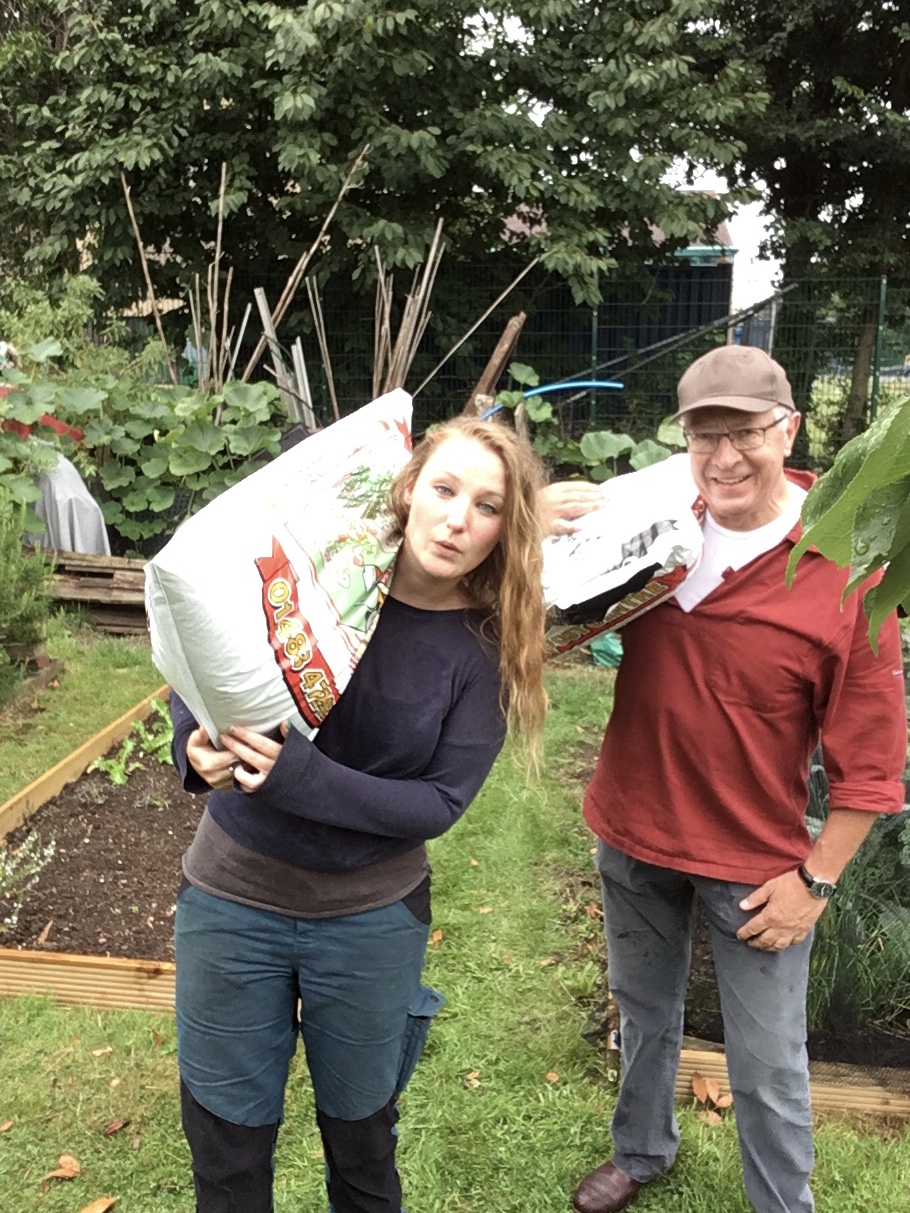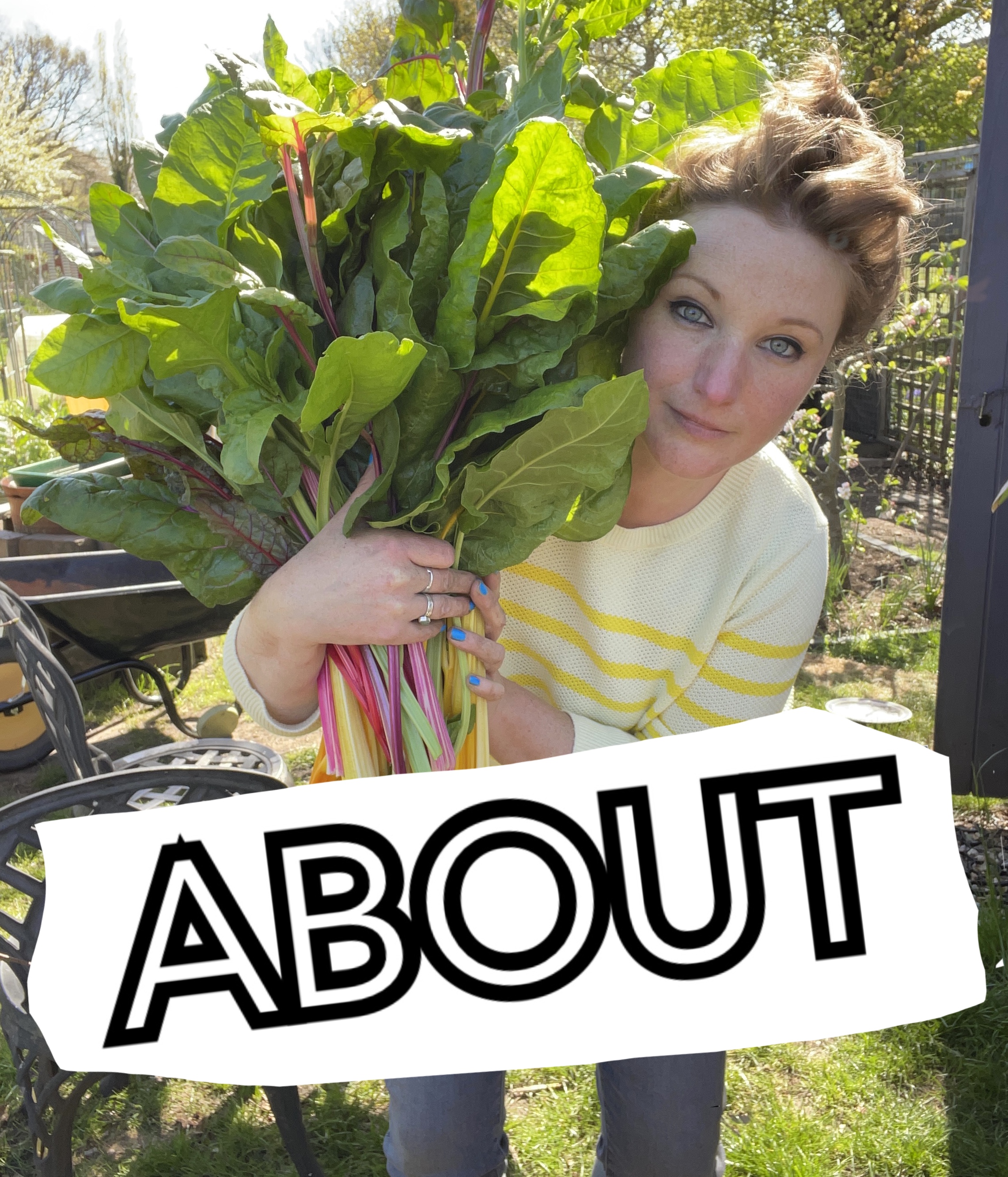WHAT IS GREEN MANURE and why we should all be using it!
Although the majority of our city is on famous London Clay on our allotment, our soil is so sandy we may as well be trying to grow in a child’s sand pit! This has lead to a constant battle to increase the organic matter in our patch which up until this year has manly been via the working in of horse manure but we are now turning to Green Manure!
This spring we tried to use the manure as more of a ‘mulch’, as we are transitioning to a more no-dig approach in an effort to improve the whole structure of our soil and ended up discovering the joy of Aminopyralid contamination… this is a problem I will delve into in much greater detail in another post but the end result is that we are determined to try to improve our soils in in-house ways that doesn’t mean importing masses of foreign muck (literally speaking). So along with our own compost we are turning to leaf mold, comfrey and green manure.
Leaf mold is fairly self explanatory but What is Green Manure?
‘Green Manure’ is a broad term used to describe a group of plants that are specifically grown for their effect on the soils they are planted in and benefits for subsequent crops. Some make nutrients more available in the soil, some take the nitrogen from the air and fix it in the soil, they can improve soil structure by adding bulk to poor thin soils, or loosening up heavy clay. They also act as a protective layer for bare soils between crops, supressing weeds, reducing errosion from wind and rain and for almost any situation, there is a green manure plant out there that can help!
Instead of listing 20 different varieties you can grow and what they are each good for, (for that info i will link to a page on sowseeds.co.uk which is the most comprehensive list i’ve found HERE), I’m going to write a bit about why i think we should be using them more.

Creating a closed, sustainable system.
The goal at Plot 37 is to be able to produce everything we need to carry on producing on the plot. By that i mean reducing and eventually one day, almost completely avoiding the need to import nutrients and matter onto our site. The four main reasons we are aiming to create a closed loop system:

1. For peace of mind…
We all garden for many reasons but one of the most common reasons is a real desire to know whats in our food!
Like i mentioned above, we found that we had Aminopyralid contamination in some of the organic horse manure we brought onto our plot last year. It is a herbicide specifically used to kill off ‘broad leafed’ plants but to leave grasses untouched and for that reason is used in fields where wheat, rye, oats…etc are being grown to eliminate competition from weeds. Although the main ‘crop’ is not killed off by the poison, it is held within that plants tissues and is passed on up the food chain. To us yes, but also to horses/cows/chickens as both food and bedding in hay, straw and feed. The chemical isn’t broken down by its transit through the guts of animals and comes out relatively unscathed the other end. All ready to be bagged up and put on our unsuspecting vegetable beds of which the majority are? You guessed it! Effected the same way the weeds in the original field were because most of what we grow in our allotments barring Sweetcorn and Aliums are broad leafed plants! Fabulous!
The Aminopyralid does eventually break down in the soil, by contact with soil borne bacteria but that process is slowed down considerably if you are using the manure as a mulch in an effort to reduce soil disruption rather than digging it right in.
This is a huge problem. On our gardens yes, but the more you think about it the worse it gets… anyway! i will link to more info if you would like it at the bottom of this post!
The result of that encounter has lead me to reconsider the wisdom of being so protective of the land we are cultivating only to bring in material that we can be in no way sure about!
2. Financial…
This has been brought into sharper focus since the pandemic and bringing in enough manure/compost/feed to cover our allotments needs each year really adds up. Growing your own ‘manure’ is just the cost of the seed. You can even save the seed for resowing the following year from some varieties. Its very easy to find yourself throwing money at a plot even if you’re not buying chemicals with all the different protections and cloches and bits and bobs.
Reuse, recycle and work with nature not against it!
3. Sustainability…
For a system to be sustainable, which is our aim on our little patch, you can’t be relying on importing large quantities of matter to constantly top stuff up. That’s not how it works. We are really focusing on our own compost, making our own feed and now then next step is green manures.
4. Effort...
Not to be underestimated! Its hard work unloading 50 bags of 80ltr horse shit every six moths and dragging it over the site in a wheel barrow…. much easier to sow some seed. Watch it grow. Cut it down. Perfect.
So what are we doing this year?
Of the many varieties and benefits you can choose from when finding the right Green Manure for your site/problems, it can get a bit confusing. We are going to keep it simple. Our main soil problem is lack of organic matter and poor fertility so Mum and I are going to focus mainly on Phacelia, Field Beans and Alfalfa.
Phacelia
We are growing this one for two reasons and in two different ways.
It has an extensive root structure that will help and masses of top growth to add bulk. Its very fast grwoing and we are sowing it in some beds to be cut down before we plant winter crops in them and in other areas we will leave it to flower are it produces a fantastic purple flowers that the bees go mad for.
BUY SEEDS HERE!
Field Beans
Field Beans are actually a broadbean that does produce pods but they’re very small. Although its often recomended for heavy clay soil its the large amount of top growth and it nitrogen fixing characteristics that we are after!
BUY THEM HERE!
Alfafa
I’ve seen Alfalfa discribed as the complete fertaliser!
Again we are growing this one as a boost in organic matter as its soft growth can be cut and mulched rather than dug in. Its also a nirogen fixer and does well in dry, poor soil improving structure and overall soil health.
It can also be grown for longer periods and cut repeatedly every few months!
BUY SEEDS HERE!
I’ve got high hopes for green manure and i really hope you’ll follow me along as we go to see how it goes! I’n this weeks vlog LINK HERE i have sown the first of the Phacelia. Whish us luck! And please, if you have any experiance with grenn manures or tips thats might help let me know in the comments bellow!
Jessie.x
